Tuberculosis epidemiology and demographics
|
Tuberculosis Microchapters |
|
Diagnosis |
|---|
|
Treatment |
|
Case Studies |
|
Tuberculosis epidemiology and demographics On the Web |
|
American Roentgen Ray Society Images of Tuberculosis epidemiology and demographics |
|
Risk calculators and risk factors for Tuberculosis epidemiology and demographics |
Editor-In-Chief: C. Michael Gibson, M.S., M.D. [1]
Overview
Epidemiology
Tuberculosis is one of the world's deadliest diseases. Since 1990, the mortality rate of TB decreased 45%, and the 2015 global target is a 50% reduction of this rate. It is estimated that about 1/3 of the world's population is infected with TB:[1][2]
- In 2012 about 8.6 million people developed symptomatic TB
- 1.1 million of these cases occurred among people with HIV
- 1.3 million people died from TB
- 320 000 of these cases occurred among people with HIV
In the United States, a total of 9 582 cases were reported in 2013. This represents an incidence of 3.0 cases per 100 000 persons.[1][2]
Compared to 2012, both the number of TB cases reported and the case rate have decreased, 5.4% and 6.1%, respectively.[1][2]
TB Infection Rate in the US
Since the 1992 TB resurgence peak in the United States, the number of TB cases reported annually has decreased.[1]
After the resurgence of TB in the mid-1980s, the number of case counts increased until its peak in 1992. After 1993, the number of case counts began to decrease, and 2013 marked the twenty-first year of decline in the total number of TB cases reported in the United States since the peak of the resurgence. In 2013, a total of 9,582 cases were reported from the 50 states and the District of Columbia (DC). This represented a decline of 3.6% from 2012 and 64.1% from 1992.[1]
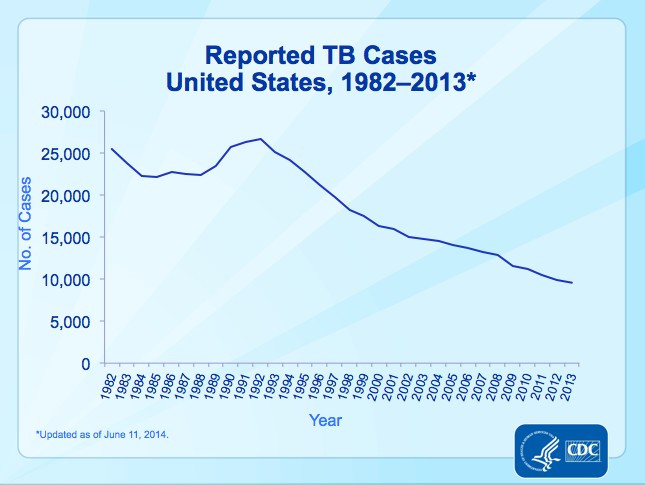
Thirty-seven states reported a rate less than 3.0 TB cases per 100,000, the 2013 national average. Fourteen states and DC reported a rate above 3.0 TB cases per 100,000; these accounted for 69% of the national total in 2013 and have experienced substantial overall decreases in cases and rates from 1992 through 2013.[1]
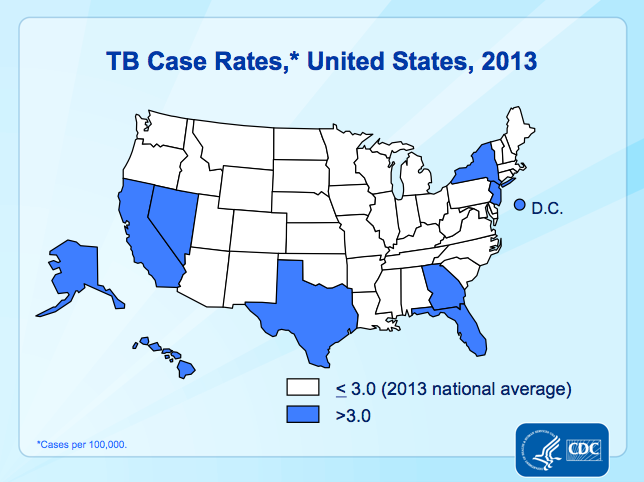

Age
An estimated 530 000 children became ill with TB and 74 000 children who were HIV-negative died of TB in 2012.[1][2]
In 2013, case rates in all age groups declined by more than 50% from 1993 values. Below is the comparison between the case rates (per 100 000 persons) of these two years, according to different ages:
| Age | Case rate in 1993 | Case rate in 2013 |
|---|---|---|
| >65 years | 17.7 | 4.9 |
| 45 - 64 years | 12.4 | 3.6 |
| 25 - 44 years | 11.5 | 3.6 |
| 15 - 24 years | 5.0 | 2.2 |
| < 15 years | 2.9 | 0.8 |
| Data provided by the CDC[1][2] | ||
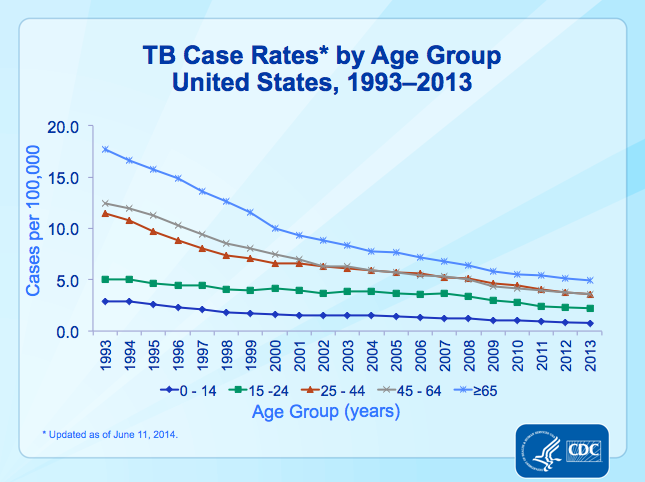
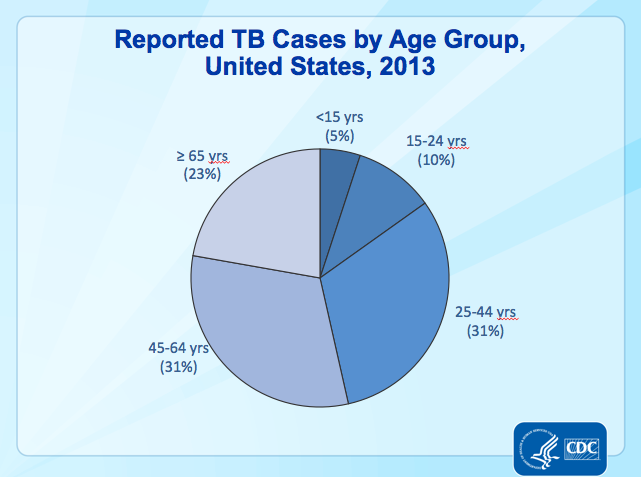
Gender
410 000 women died from TB in 2012, including 160 000 among women who were HIV-positive. Of the overall TB deaths among HIV-positive people, 50% were among women. TB is one of the top killers of women of reproductive age.[1][2]
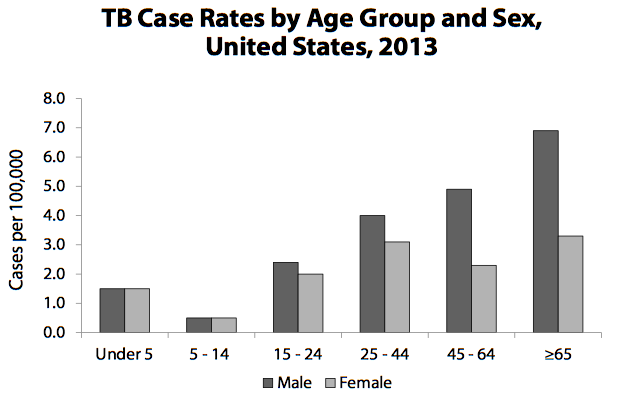
Race
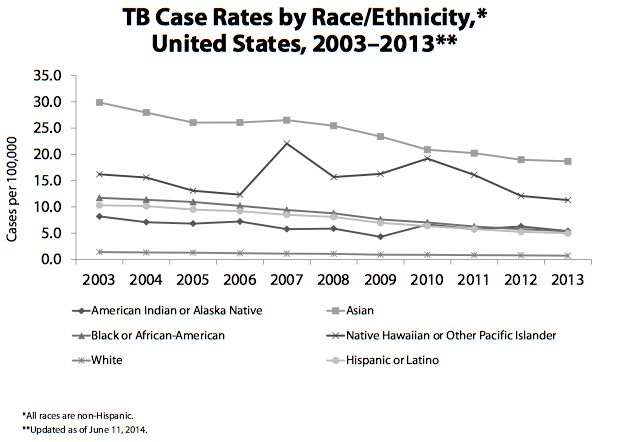

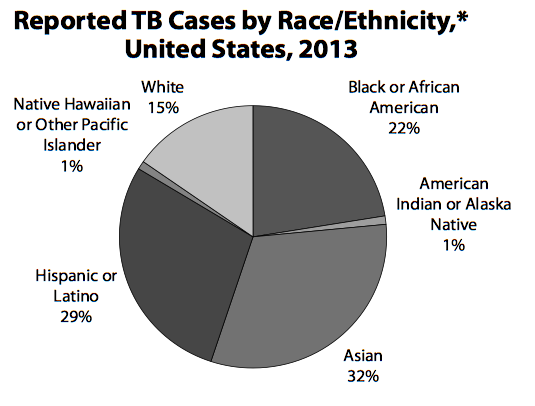
HIV Coinfection
TB is a leading killer of people who are infected with HIV. In 2012, 46% of notified TB patients had a documented HIV test result. Africa has the highest TB/HIV burden, where three out of four TB patients know their HIV status. In 2012, 4.1 million people enrolled in HIV care were screened for TB, up from 3.5 million in 2011. Globally, 57% of the TB patients known to be living with HIV in 2012 were started on antiretroviral therapy (ART).[1][2]